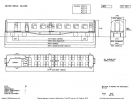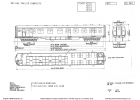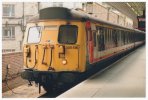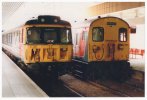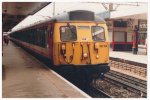Clarence Yard
Established Member
- Joined
- 18 Dec 2014
- Messages
- 2,487
Were class 312 emus ever called 'AM12' by anyone within BR? I know they were based on the emus classified AM10 in 1964/5 that were later given the TOPs class 310 designation. The AM series started in the 1950s, and as far as I know AM2 to AM11 became 302 to 311 (AM1 was withdrawn in 1966 before TOPS).
I did hear a few people refer to them as AM12 in their early days on the LM but on the GN we always called them a 312. I travelled to/from work on the AM10 fleet (and very occasionally a 304 or 312) in and out of Euston for over a decade and in my 43 years of commuting to/from Watford Junction they were my clear favourite, although a 350/2 comes close.
The drivers used to push them well beyond 75mph if it was needed and loading/unloading was swift and efficient. You never got too near the platform edge on the stations as the doors would swing open as the trains came in and people would be leaving the unit before it came to a stand. I used to do the same at Euston so I could get past the ticket collectors before the crowd behind caused a blockage at the barrier. The heating worked, the seats were comfortable and the ride was good.
DOO was the main factor in them leaving the GN. The 317 was a superior performing piece of kit but in the London area of the GN the EMU’s rarely got in the way of an HST, whether they were a 312 or 317. Personally I didn’t like the early 317 sets on the LM service out of Euston - I found them airless and claustrophobic with inferior seats. I was quite glad to see them go when we got the new “dusty bins”.

